Crocodiles rank among the largest and most formidable predators on Earth, capable of overpowering prey several times their size. These ancient, awe-inspiring, but also feared creatures have captivated human fascination for centuries, giving rise to both genuine curiosity and countless ‘big fish’ stories about their size. Many of the ‘giant’ crocodile photos you see on the internet are either taken using techniques like forced perspective or are simply photoshopped. So, how big can they get? What is the largest crocodile in the world? Here are the top ten largest crocodiles ever recorded.
The saltwater crocodile is the largest crocodile species in the world
The saltwater crocodile (scientific name: Crocodylus porosus) is the largest crocodile in the world and the biggest of all living crocodilian species. Average-size males reach 17 feet (5.2 meters) and 1,000 pounds (450 kg), but specimens 20+ feet (6+ meters) long and weighing over a ton are not unheard of.
Additionally, due to their size, aggression, and distribution, saltwater crocodiles are regarded as the most dangerous extant crocodilian to humans.
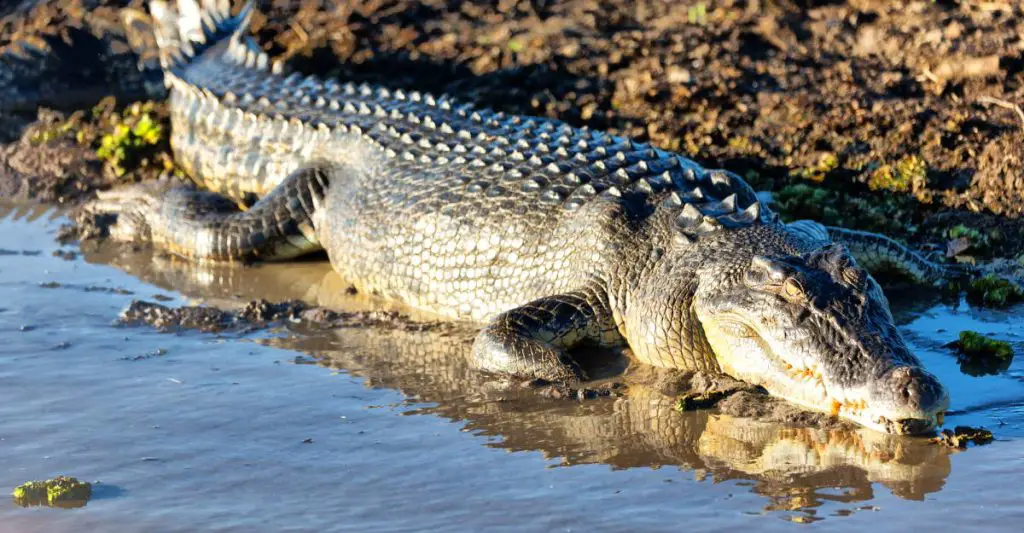
List of the largest crocodiles in the world
Crocodiles are really large reptiles and can get enormous sizes both in the wild and in captivity. But, there are a lot of over-exaggeration and hoaxes about their size. So, how big are the largest crocodiles actually?
The photographs you see are often manipulated digitally to make the animal look much larger than it is. Or, other techniques like the forced perspective (a technique that employs optical illusion to make an object appear far larger than it really is) are commonly used in these photos.
Here are the top 10 largest crocodiles ever recorded, for real (no BS list).
10. Tawi-Tawi crocodile [5.15 meters / 16 feet 11 inches]
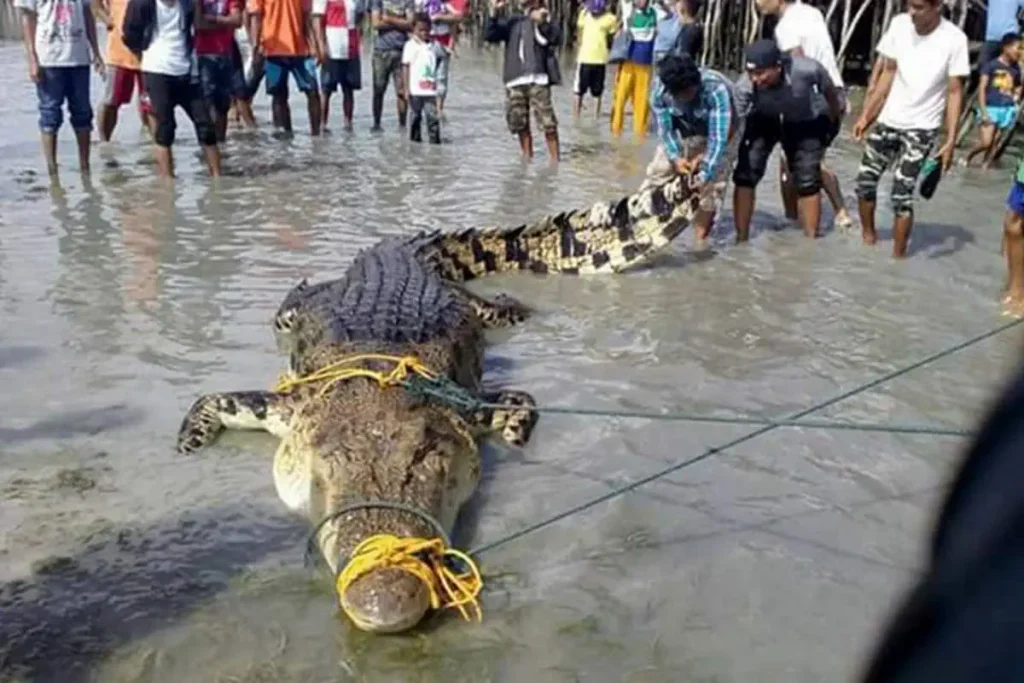
On September 9, 2017, a 5.15-meter (16 feet 11 inches) saltwater crocodile was captured by fishermen in Tawi-Tawi, an island province in the Philippines.
According to the local resources, a local fisherman first spotted the crocodile on Tuesday, but initially, they thought it was a wooden log. But it moved when he approached it. Then he reported the incident to the officials, and an operation was conducted to catch the crocodile.
A lot of fishermen and officials were involved in the operation since the giant crocodile was very aggressive. It wrecked a boat and damaged several fishing nets during the operation. Ruben Balcorza of the Municipal Disaster Risk Reduction Management Office of Simunul, Tawi-Tawi said that the crocodile is now under the care of the municipal government.
Killing a crocodile is a crime in the Philippines that has a fine amounting to P100,000 pesos (around $2000) and imprisonment of up to six years.
Current status: alive
9. Matara crocodile and Jaws III [5.18+ meters / 17+ feet]
Matara crocodile
A huge saltwater crocodile, over 17 feet long, was captured in Matara, Sri Lanka on November 7, 2016. It was stuck in a canal leading off the Nilwala river. The giant reptile was released back into the river by wildlife officials, with the help of local people (Thanks for the comment, Dalya).
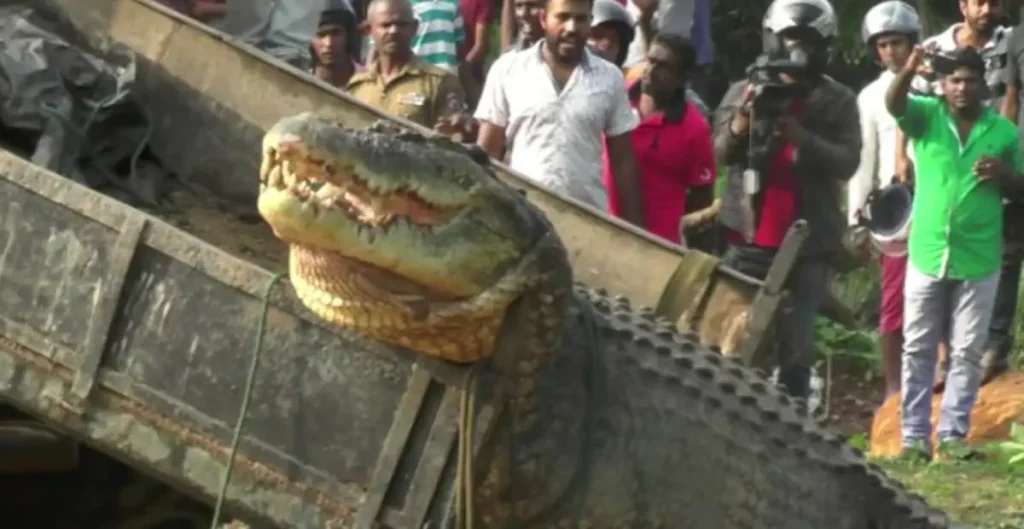
Current status: alive
Jaws III
Jaws III was a huge saltwater crocodile living in the Madras Crocodile Bank Trust and Centre for Herpetology, a reptile zoo and herpetology research station, located 40 km (29 mi) south of the city of Chennai, in the state of Tamil Nadu, India. It was started in 1976 by herpetologist Romulus Whitaker and his wife Zai Whitaker.
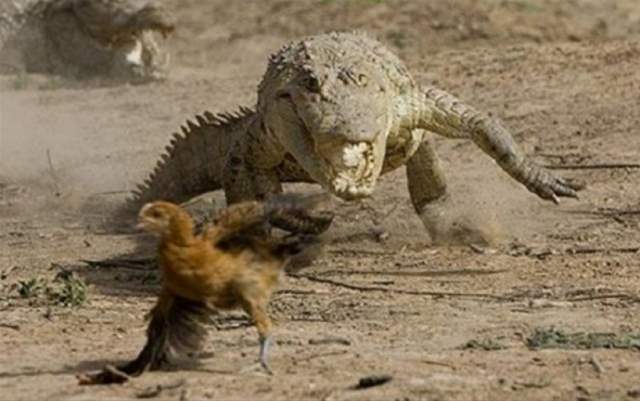
Related: 20 amazing crocodile facts
The huge crocodile arrived at Madras Crocodile Bank Trust shortly after it opened in 1976 and for the first few years was housed with his brothers and sisters in what was then a fairly ordinary exhibit.
However, when he started to outgrow his siblings in a truly astonishing fashion, it soon became apparent that he was no ordinary crocodile but a genuine giant of freakish proportions. Due to his unusually savage disposition and devastating strength, he could not even be housed with other female crocs.
Jaws III was at least 17 feet (5.2 meters) long and weighed over a ton. It was believed to be the biggest crocodile in captivity in southern Asia. He was one of the biggest attractions in the park.
Romulus Whitaker says “He (Jaws III) is my favorite here. I’ve had a long history with this guy, who was born in 1970. I used to carry him under my arm once…”
(Thanks to Mr. Sandeep Sugumaran)
Jaws III has died in January 2020 (thanks for the comment, Vishwamitra). One of the persons who knew him best, V. Gangadurai, chief reptile keeper at the Madras Crocodile Bank Trust, said:
“I fed Jaws for 40 years. My wife still asks me what happened, and some visitors still ask to see him. They get upset when we tell them he passed away.”
8. Puento Noire Crocodile [5.40 meters / 17 feet 8.6 inches]
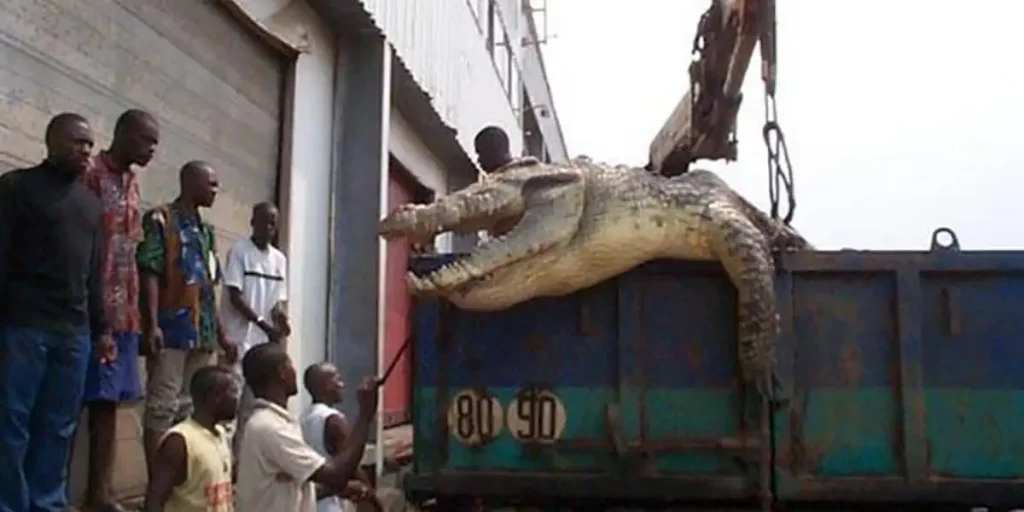
This unnamed monster crocodile had been at the center of many hoaxes. The fact is, this aggressive Nile specimen was killed in a safety operation near Puento Noire, Republic of Congo. Estimated size: 5.4 meters – 17 feet 8 in.
Current status: dead
7. Gomek [5.42 meters / 17 feet 9.39 inches]
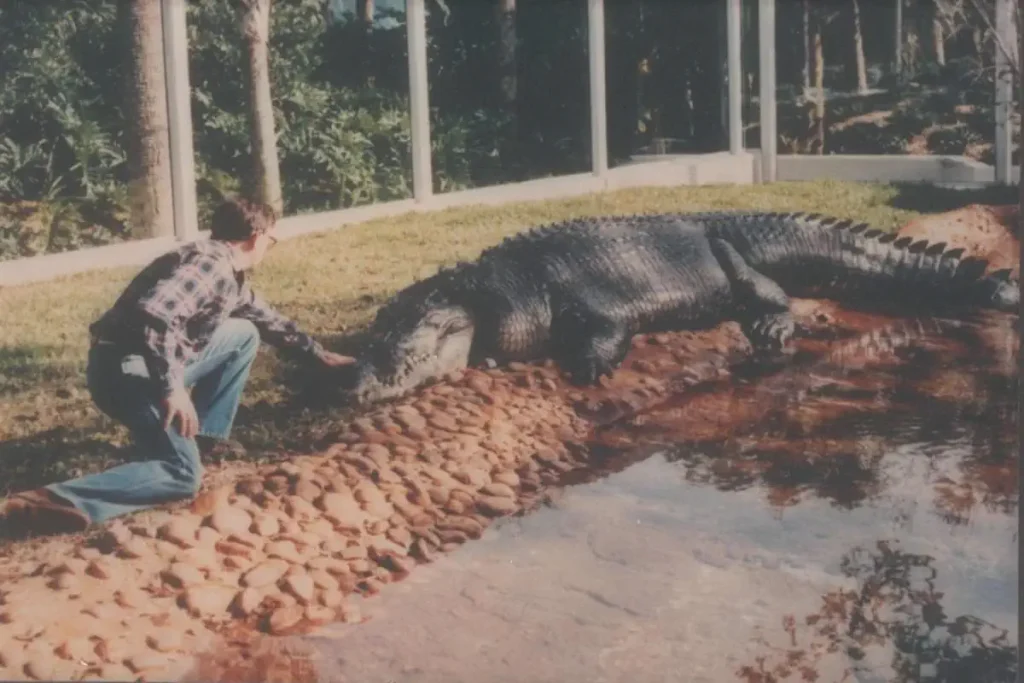
Gomek was a large saltwater crocodile captured by George Craig in Papua New Guinea. He was purchased by Terri and Arthur Jones in 1985 and was kept in Ocala, Florida for five years before being sold to the St. Augustine Alligator Farm Zoological Park in Florida.
For 8 years he wowed spectators with both his amazing nutria-tossing abilities and his even more amazing tolerance of people. Feeders of the large croc were allowed to go into the enclosure and get as close as 1 meter (3 feet) from the large animal (normally suicidal proximity) without any fear of attack (for another example of a croc with great tolerance of people, see the story of Chito and Pocho).
While feeders still used long tongs to feed Gomek, he was generally considered to be a “tame” crocodile and was the favorite of the Alligator farm and people around the nation.
After many years, Gomek, one of the largest crocodiles in the world, died of heart disease on March 6, 1997. By then, he was a very old crocodile and one of the largest and tamest captive crocodiles in existence.
When he died, he was 5.42 meters (17.8 feet) long, weighed 860 kg (1896 pounds) – as confirmed by St. Augustine Alligator Farm – and was probably between 60 and 80 years old. There is a tribute to Gomek near his enclosure, which now houses his successor Maximo, and his mate Sydney.
Current status: dead
I received a message from Marcus Miller, who worked with Gomek in the past. Here is the message below. Many thanks, Mr. Miller!
“I saw your article on the 10 largest crocodiles ever. That was a wonderful piece, and if your accuracy concerning Gomek is any indication, very accurate as well. I just wanted to chime in that I had the privilege of working with Gomek, up to around August of 1992. He wasn’t considered “safe” by any means. But you could get away with a lot with him. I used to do the feeding shows without the tongs, holding the nutria by the tail. I also have a photo of myself (the photo above) touching Gomek (briefly!) on the nose.”
6. Cassius [5.48 meters / 17 feet 11 inches]: The Biggest Crocodile in the World in Captivity
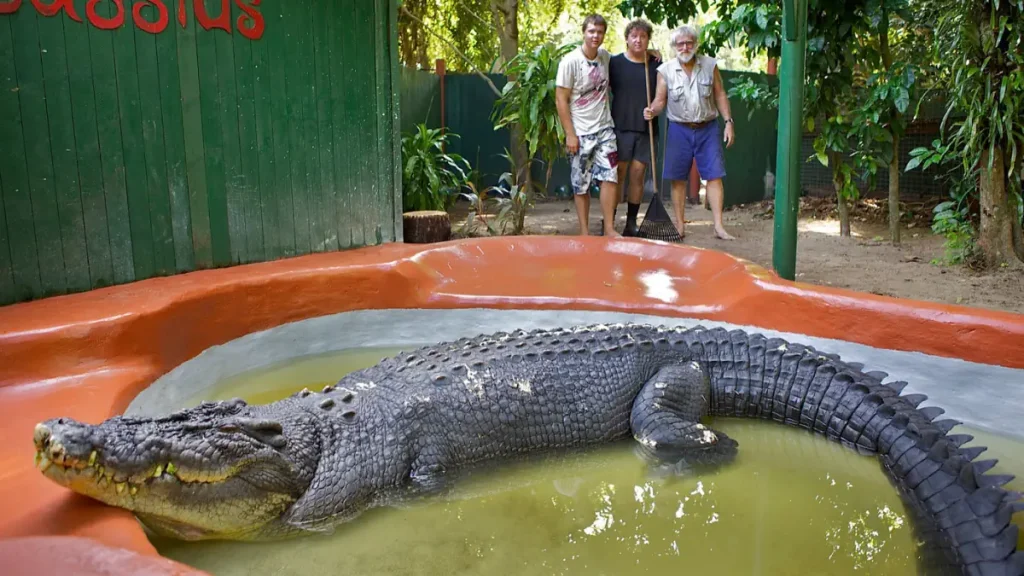
This Australian saltwater giant has been claimed as the biggest crocodile in the world held in captivity and was recognized by the Guinness World Records as the world’s largest crocodile in captivity in 2011.
Cassius is missing his front left limb and the tip of his tail due to vicious fights. He lives in Marineland Melanesia on Green Island in Australia. The crocodile was captured in 1987 in the Finis River in the Northern Territory after attacking boats and causing a nuisance.
Cassius is 5.48 meters (17 feet 11 in) long and is believed to be around 120 years old. It is named after Cassius Clay, the birth name of boxer Muhammad Ali (January 17, 1942 – June 3, 2016).
Current status: alive
In the video above, you see George Craig, the capturer, and caretaker of Cassius. He also captured Gomek, one of the largest crocodiles ever measured. The Australian is dubbed the “Real-life Crocodile Dundee”.
For years, he captured dangerous large crocodiles like Cassius and Gomek and relocated them to a safe enclosure – which is good for both the crocodiles and the humans.
After the capture of Cassius, Mr. Craig spent 30 years with the giant reptile and fed him every day. He admits, though, that Cassius would eat him given the chance.
Thank you, again, Mr. Marcus Miller, for the valuable information.
5. Brutus [5.60 meters / 18 feet 4 inches]
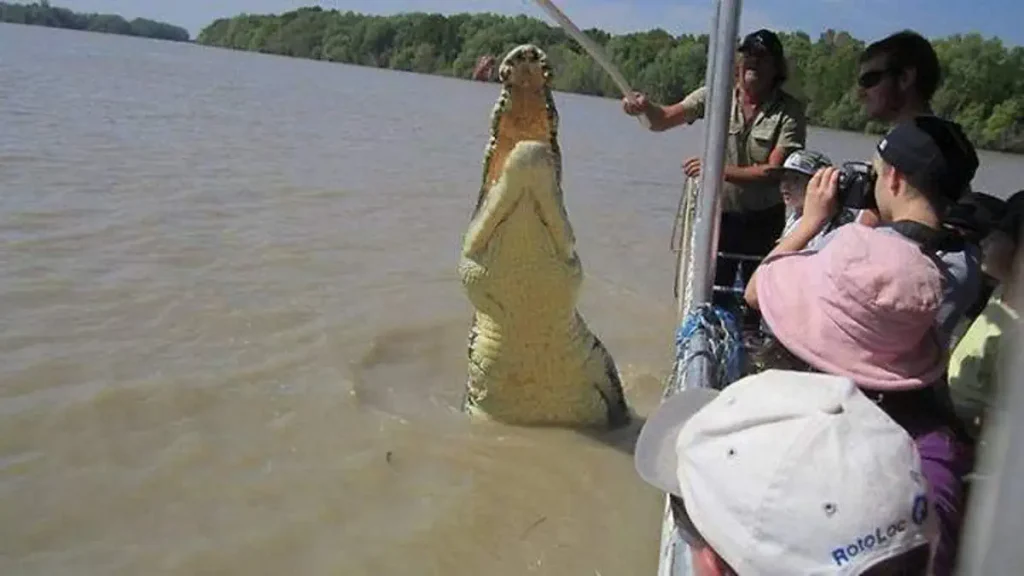
This massive saltwater crocodile named “Brutus” has only three limbs! It is known to frequent the Adelaide River, Northern Territory, Australia. Brutus is missing his front leg following what is believed to have been a confrontation with a bull shark in the river’s estuary – leaving many people to wonder just how big the shark was.
Brutus is conservatively estimated at 5.6 meters (18 feet 4 in) in length and about a ton in weight.
Current status: alive
4. Yai [5.61 meters / 18 feet 5 inches]
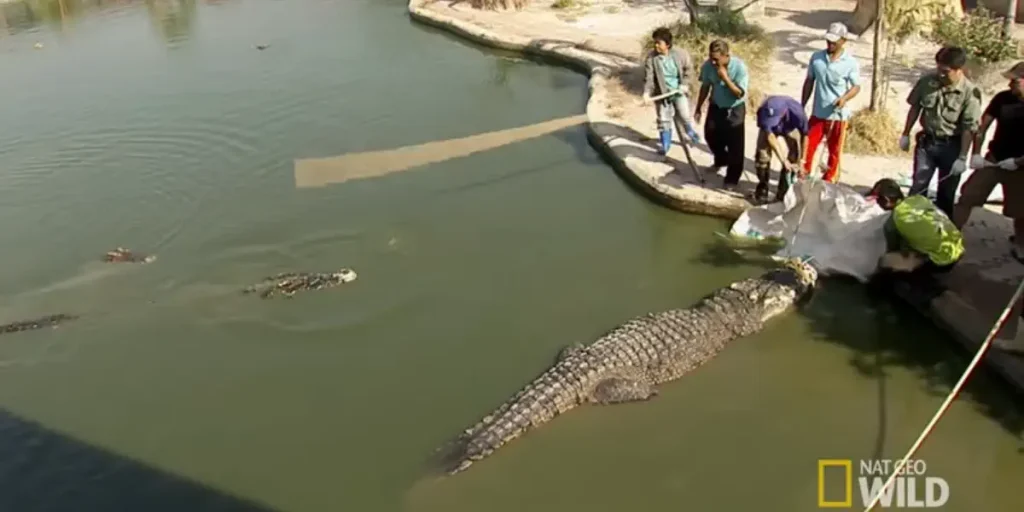
Yai is an Estuarine-Siamese hybrid. It is at the Samut Prakan Crocodile Farm and Zoo in Thailand. The length of Yai is between 5.5 and 6 m long (different sources give different lengths, I chose to take the minimum). But it is bigger than Cassius.
Yai, like Gomek, has a great tolerance for people. Feeders and caretakers can clean him, and touch him without fear. Even visitors are getting really close to him.
In 2012, Yai was measured at 18 feet and 5 inches in length (5.61 meters).
Current status: alive.
3. Bujang Senang [5.88 meters / 19 feet 3 inches]
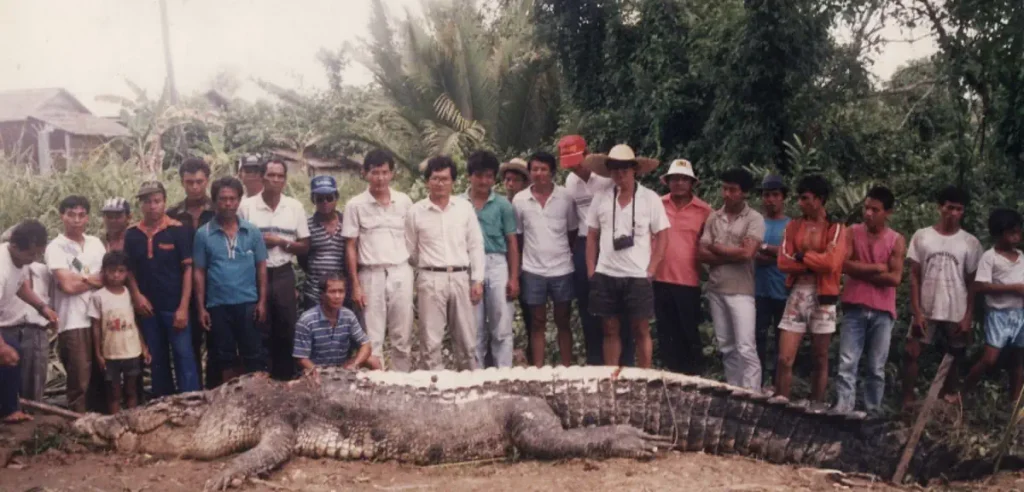
Bujang Senang was a massive saltwater crocodile and it was living in Borneo. According to local sources, he was a man-eater (some people even claimed that he had been around and attacking and killing for at least thirty years). At first, he was estimated at 25 feet (7.62 meters).
Bujang Senang was killed on May 20, 1992. After the kill, it turned out that his length was overestimated. He was 19 feet 3 inches long (5.88 meters) and reportedly weighed over a ton.
Current status: dead
2. Dominator [6.1 meters / 20 feet]
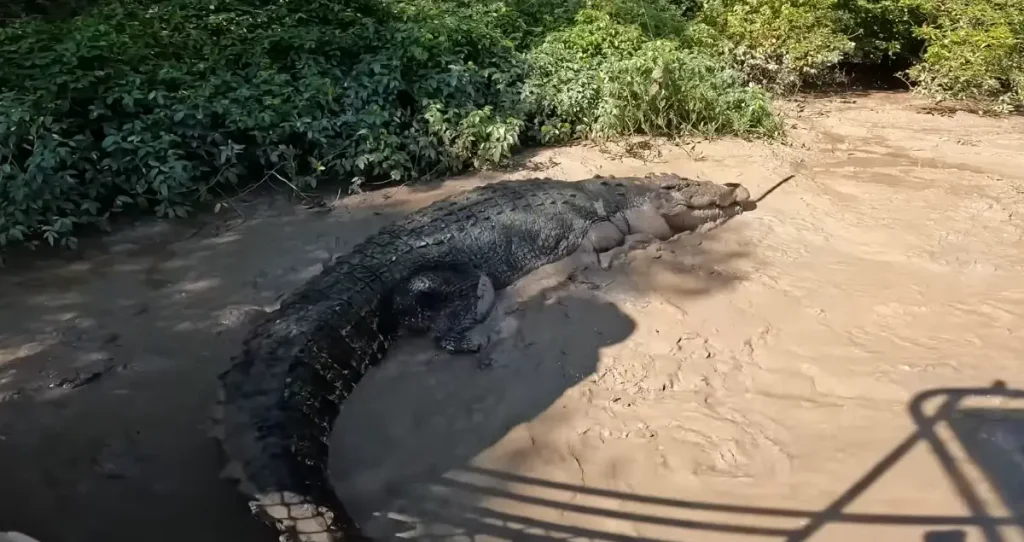
Dominator has never been officially measured but it is estimated that he measures up to 20 feet (6.1 meters) and weighs over a ton. He shares the same territory with another saltwater giant Brutus (Adelaide River, Northern Territory, Australia).
Dominator is probably the largest crocodile in the world now.
Current status: alive
1. Lolong [6.17 meters / 20 feet 3 inches]: The Largest Crocodile Ever Measured
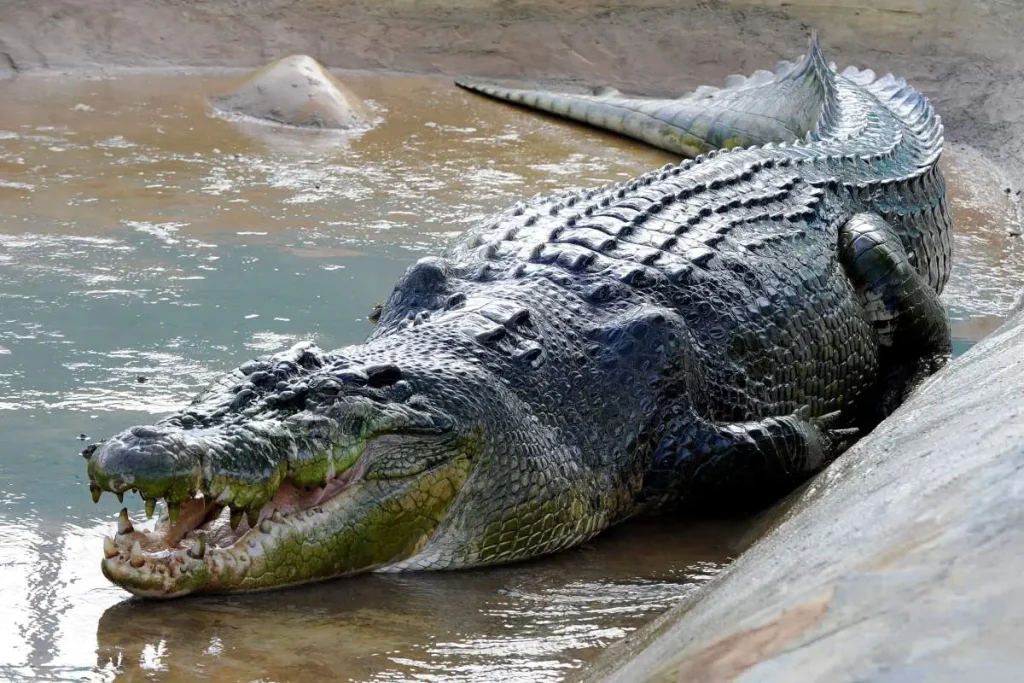
Lolong was an Indo-Pacific or saltwater crocodile (Crocodylus porosus). It was sedated and measured by zoologists in his enclosure in November 2011, and this measurement confirmed him as the world’s longest crocodile ever caught and placed in captivity.
Measured at 20 feet 3 inches (6.17 meters), and weighing 2,370 lbs (1,075 kg), Lolong was the largest crocodile in captivity. He was also the biggest crocodile in the world ever measured from snout to tail.
He was caught in Bunawan Creek in the province of Agusan del Sur in the Philippines on 13 September 2011. He was captured with the joint cooperation of the local government unit, residents, and crocodile hunters of Palawan.
The capture of Lolong
The giant crocodile was hunted over a period of three weeks; once it was found, it took around 100 people to bring him onto land. He became aggressive at several points during the capture and twice broke restraining ropes before eventually being properly secured. He was estimated to be at least 50 years old.
Lolong was suspected of eating a fisherman who went missing in the town of Bunawan, and also of consuming a 12-year-old girl whose head was discovered two years earlier. He was also the primary suspect in the disappearance of seahorses in the area. In the examination of the stomach contents after his capture, remnants of water buffaloes reported missing before Lolong’s capture were found, but no human remains.
The crocodile was named after Ernesto “Lolong” Goloran Cañete, one of the veteran crocodile hunters from the Palawan Crocodile and Wildlife Reservation Center, who led the hunt. After weeks of stalking, the hunt for Lolong took its toll on Cañete’s health. He died of a heart attack several days before the crocodile was captured.
A “gentle” giant
Despite his initial aggressiveness, Lolong was remarkably gentle in his enclosure. This shouldn’t surprise anyone familiar with the effects of capturing large crocodiles from the wild. It’s a phenomenon called “capture myopathy”, the shock of being caught, poked prodded, and introduced to a completely new and alien environment is a stressful experience, particularly for an animal as large as Lolong who has been master of his domain for decades. It might seem unusual to think of crocodiles as being susceptible to stress, but they’re just like any other vertebrate in that respect, and something that anyone who maintains captive crocodiles should be aware of.
The nongovernmental organization activist Animal Kingdom Foundation Inc., with the cooperation of People for the Ethical Treatment of Animals, had urged the local government of Bunawan to return Lolong to the creek of barangay Nueva Era, where the giant reptile was captured. But, in an ongoing debate, Bunawan mayor Edwin “Cox” Elorde and residents of the barangay opposed the crocodile’s release, arguing that he would threaten individuals living in the vicinity of the creek.
Lolong died in captivity just 18 months after he was captured, at around 8 pm on 10 February 2013. His necropsy (see notes 1) revealed that he died from congestive heart failure compounded by fungal pneumonia, lipidosis of the liver, and kidney failure. Here is a video that was shot when Lolong was alive:
Lolong’s death was not the caretakers’ mistake
Lolong’s enclosure might not look pretty, but, in fact, crocodiles in the wild call muddy holes “home”, they just look for any kind of shelter and the basic necessities for survival. So, Lolong was provided with those basic necessities. Crocodiles do not eat if they’re too stressed, but in Lolong’s case, he was eating and seemed to settle down into his new surroundings and was behaving normally.
According to the zoologists who measured Lolong, “Anyone who actually met his caretakers would have realized he was well-loved. You might say they adored him.” He adds: “…there were also financial incentives to keep Lolong alive; he was popular, brought much money into the community, and generated a lot of national and international attention.”
So, despite his living environment looking terrible to an unfamiliar eye, he was well cared for.
Scientists conclude: “It would have been ideal to leave Lolong in the wild, but does such specious thinking have a place in our overcrowded world? A conflict between humans and wildlife can have major repercussions for conservation (not to mention human safety, which any level-headed human regards as being of prime importance). Yet at the same time, we can’t simply remove all wild animals simply because it makes us feel better, or safer. There has to be a compromise, and unfortunately for Lolong, he was that compromise at that particular time and place. Perhaps his death can be a lesson for us.”
Lolong is Officially the Biggest Crocodile in the World Ever Properly Measured
Lolong was officially certified by the Guinness Book of World Records as the “world’s biggest crocodile in captivity” at 20.25 feet (6.17 meters).
But, there are also a lot of unverified claims that there are even larger crocodiles than Lolong in the wild.
Current status: dead
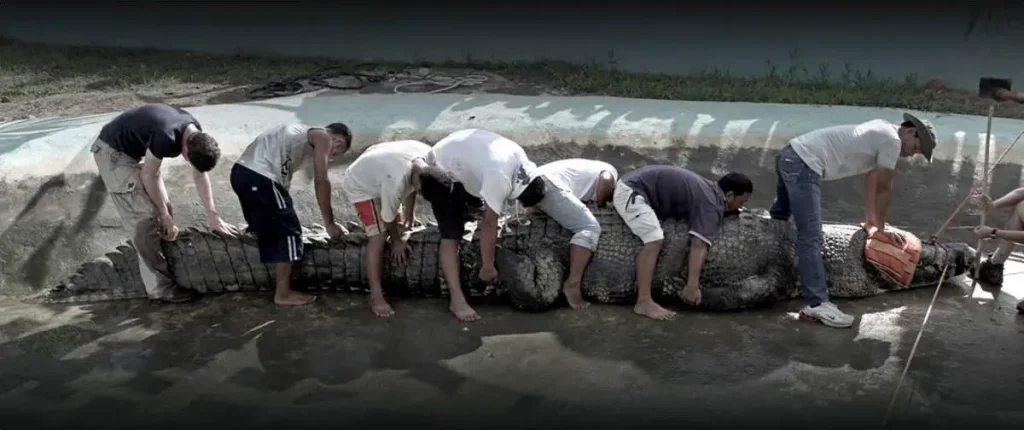
World’s largest crocodile candidates
Here are the unconfirmed candidates for the world’s largest crocodile title:
Puerto Rico crocodile [6.2 meters / 20 feet 4 inches, up to 6.3 meters / 20 feet 8 inches]
After Lolong, the best-documented evidence of a record-sized crocodile comes from Obo village on the Fly River in Papua New Guinea (Montague 1983). This crocodile drowned in a fishing net set for barramundi fish and after 50 men hauled the crocodile onto the bank they found an entire Rusa Deer (Cervus timorensis) carcass in the stomach.
The crocodile’s skin had already been removed and salted when Jerome Montague and one of the authors (RW) visited the village, but the skin plus the decapitated head measured 6.2 meters (20.3 feet). The authors considered this likely an underestimate considering possible shrinkage of the skin plus an incomplete tail tip, suggesting a TL closer to 6.3 meters.
The DCL of this crocodile was 720 mm (28.3 inches), which at 6.2 meters TL would indicate a DCL:TL (dorsal cranial length vs total length) ratio of 1:8.6, or 1:8.8 considering the likely 6.3 meters TL.
While not a complete or living specimen, this is still considered the largest saltwater crocodile (C. porosus) ever measured and documented.
Current status: dead
Cambodia Crocodile [7 meters / 23 feet]
As you can see below (see the “life-size replica” of Krys crocodile), crocodile experts mention a 7-meter saltwater crocodile. As far as I know, Lolong is the largest crocodile ever measured. So, I asked one of them via Twitter what he meant by that. Here’s his answer:
“Lolong’s skull was 70 cm long, a HL:TL ratio of 1:8.8. There’s a saltwater croc skull in the Paris Museum, originally from Cambodia, that’s 76 cm long. Its original owner was estimated to be 7 meters (23 feet) long, a HL:TL ratio of 1:9.2 which sounds about right.”
A crocodile bigger than Lolong?
The largest known saltwater crocodile (C. porosus) skull is housed at the Paris Museum (MNHN PMP specimen #A11803 = old museum collection #7738) originally from Cambodia. It has a DCL (dorsal cranial length) of 760 mm (29.9 in), making it 8.6% longer than Lolong’s skull. If we apply a DCL:TL (dorsal cranial length vs total length) ratio of 1:9 for this skull, TL is estimated at 6.84 meters (22.4 feet) which is 11.3% longer than Lolong’s TL (total length).
Although the actual TL was never preserved, these figures strongly suggest a nearly 7-meter (23 feet) crocodile. We can compare this with another slightly smaller skull (currently in the private collection of Shivendra Narayan Bhanja Deo, the Yuvaraj of Kanika in Bhubaneshwar, Orissa) of DCL 730 mm (28.7 in), originally from the Indian Bhitarkanika province, reported having come from a 7 meters (23 feet) C. porosus.
If those figures are true then DCL:TL ratio would be 1:9.5, sufficiently high for minor skepticism but still feasible. Applying the 1:9 ratio to the Bhitarkanika skull gives an estimated TL of 6.6 meters (21.7 feet). The truth is unlikely to be far from these figures and there is a strong sense that 7 meters (23 feet) is likely the maximum possible length for C. porosus.
Current status: dead
Kalia (Bhitarkanika Park crocodile) [7.01 meters / 23 feet]
It seems the Guinness World Record book has accepted a claim that a 23 feet (7.01 meters) giant male saltwater (named Kalia) crocodile weighing 2,000 kg lives within Bhitarkanika Park in the state of Orissa, India, but because of the difficulty of capturing such a large monster, the accuracy of the measurement is yet to be verified. There’s also no photo yet.
I am skeptical about this claim, while it is much larger than any other accurately reported measurement.
There are several unverified reports of even larger wild crocodiles, the most popular being a 7 meters plus (over 23 feet) C. porosus sighted within the Bhirtarkanika Wildlife Sanctuary in Orissa, India, in 2006 (Whitaker and Whitaker 2008). However, this was not a measurement but a size estimate taken from a boat and regardless of the skill of the observers it cannot be compared to a verified tape measurement, especially considering the uncertainty inherent in visual size estimation in the wild (Bayliss 1987).
“Another famous giant crocodile shot on the Norman River in Australia in 1957 was reported by the shooters to be over 8 meters (approx. 26 feet). While it seems likely that an exceptionally large crocodile was shot, no actual evidence was ever taken. For a crocodile whose length exceeds that of any other record by a large margin, a high degree of skepticism is understandable when bearing in mind the track record of inaccurate or exaggerated size records (Greer 1974; Whitaker and Whitaker 2008).”
Current status: alive
1823 Philippines crocodile [27 feet?/8.23 meters?]
According to biology professor Alvin Silverstein’s 1980 book Nature’s Champions, in 1883, a giant saltwater crocodile bigger than Lolong was killed in the Philippines. It measured 27 feet (8.23 meters) from the tips of its snout to the end of its tail. It was also more than 2 tons in weight. Sources say it actually required the help of 40 men to bring its body ashore.
What about Krys, the “Savannah King”?
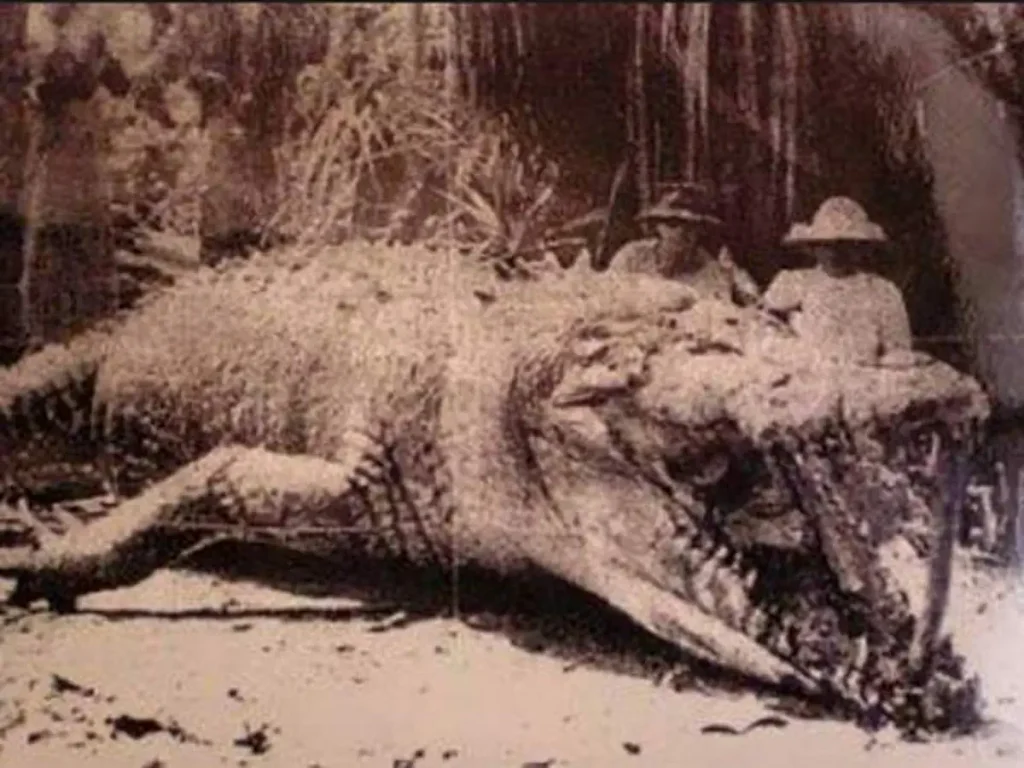
According to a story, a giant crocodile was shot in July 1958 near Normanton, Queensland, Australia. It was nicknamed Krys after the person who shot it. It was claimed to be 28 feet 4 inches (8.64 meters). There is also a life-size replica of it at Normanton.
The claimed size of Krys is highly suspicious, as it significantly exceeds any other accurately reported measurements. Its size rivals that of prehistoric crocodiles, which were much larger than their modern-day counterparts.
Most probably, the story of Krys… is just a story – there’s no evidence at all to back it up, and it just seems so far outside the maximum possible range for this species. There’s no solid evidence to believe it. That’s also why it never appears in any official statistics.
The minimum acceptable criteria for record-breaking crocs should include a tape measure along their back because “big fish” stories outnumber accurate estimates by several orders of magnitude.”
Krys’ lifesize replica
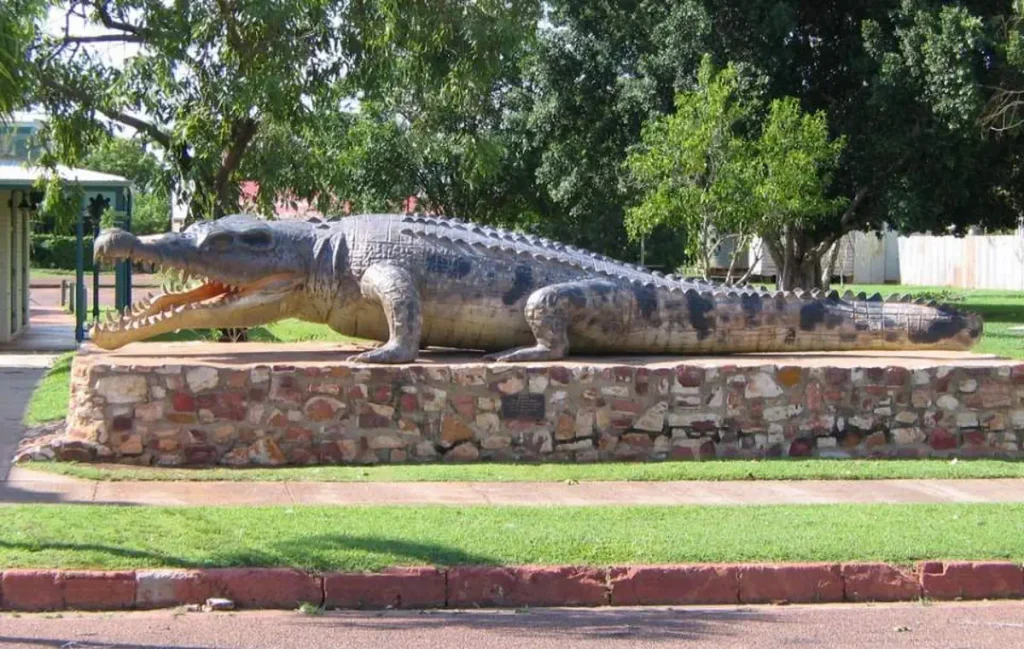
There is a life-size replica of Krys in Normanton, Australia; however, it appears that this ‘life-size replica’ isn’t very accurate.
Zoologists measured the replica’s head in June 2017 and found that its head-body ratio is not appropriate A 152 cm (4 feet 11.8 inches) skull would belong to a roughly 14 meters long crocodile (45 feet 11.24 inches!) based on a similar HL:TL (head length vs total length) ratio, probably a bit less than that in reality as the ratio would be higher) It was also estimated to weigh 2 tonnes, but in reality, a crocodile of that size would be at least double that.
Honorable Mentions
Gustave [Estimated size: ~6 meters / 19 feet 8.22 inches]

Probably not the biggest ever recorded, but this large man-eater crocodile named “Gustave” is definitely the most feared beast ever. It is a large male Nile crocodile from Burundi, and is rumored to have killed as many as 300 humans from the banks of the Ruzizi River and the northern shores of Lake Tanganyika! (Note: I am really skeptical about this claim.)
Gustave was named by Patrice Faye, a herpetologist who has been studying and investigating him since the late 1990s; much of what is known about Gustave stems from the film Capturing the Killer Croc, which aired in 2004 on PBS. The film documents a capture attempt and study of Gustave.
Gustave is the biggest Nile crocodile ever recorded
Since Gustave has not been captured, his exact length and weight are unknown. In 2002 it was stated that he could be “easily more than 20 feet (6 meters) long”, and weigh more than a ton. If true, this makes Gustave the largest freshwater crocodile and also the biggest Nile crocodile in the world.
But, please note that the estimated size of Gustave is way higher than the average size of a Nile crocodile (which is 4.2 meters). So, take these size estimations with a pinch of salt. That’s why I removed Gustave from the original top ten largest crocodiles list.
Some estimates have put Gustave at 7.5 meters (25 feet) or more in length (which is very unlikely).
Three bullet scars
Gustave is also known for the three bullet scars on his body. His right shoulder blade was also found to be deeply wounded. The circumstances surrounding the four scars are unknown.
The last reported sighting of Gustave was in 2009 in the Ruzizi River near Lake Tanganyika.
Some sources claim that it was killed in 2019, but there is no photographic evidence.
Current status: unknown, probably alive.
Utan [Close to 5 meters]
Previously, Utan was on my top ten largest crocodiles list, but I removed it. According to many sources “in the know,” he’s not as large as advertised (not even Cassius-large).
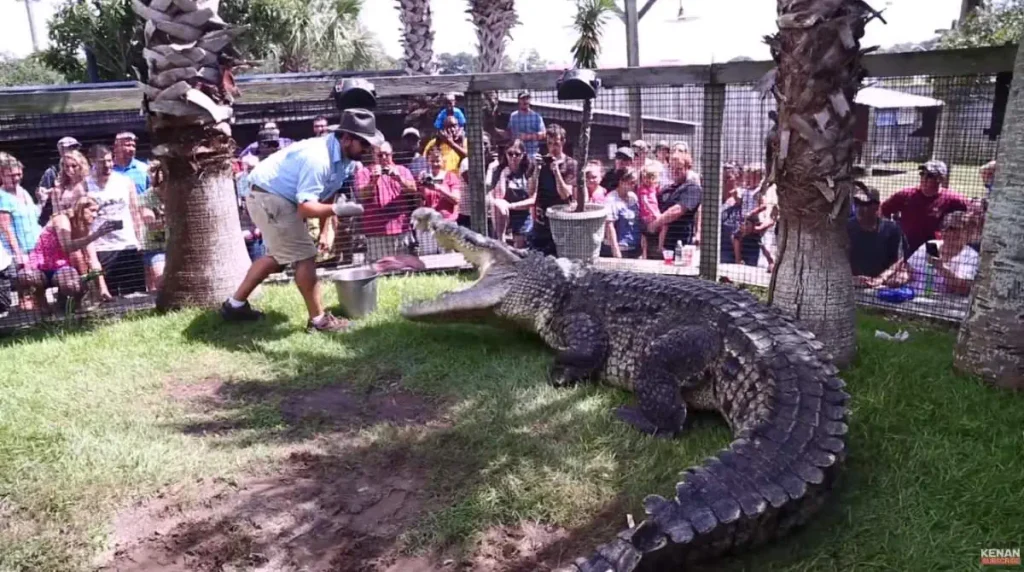
Like Yai, Utan is also a hybrid breed between saltwater and Siamese crocodile. He was born in 1964 Utan is found at Samut Prakan crocodile farm, which is about twelve miles outside of Bangkok, Thailand. There he was named after the farm owner’s son, Utan Young Prapakarn. He currently lives in Alligator Adventure, a reptilian facility located adjacent to Barefoot Landing in North Myrtle Beach, one of South Carolina’s most outstanding tourist attractions.
Although Utan’s bite force has never been tested, it is said to be estimated at about 5000 lbs. of pressure per square inch, more than two tons!
Current status: alive
Sweetheart [5.1 meters / 16 feet 8 inches]
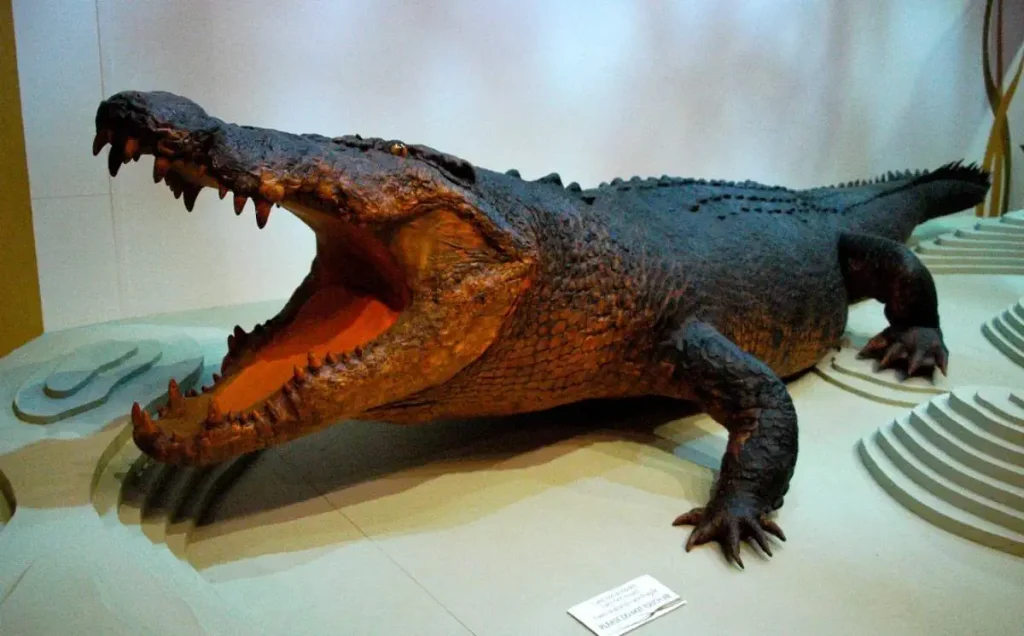
Sweetheart was a huge saltwater crocodile responsible for a series of attacks on boats in Australia between 1974 and 1979. In July 1979, it was caught alive by a team from the Territory Parks and Wildlife Commission, but, unfortunately, drowned while being transported when he became tangled with a log.
The crocodile’s mounted body is now on permanent display at the Museum and Art Gallery of the Northern Territory.
A 2007 Australian independent horror film named Rogue, about a group of tourists in Australia who fall prey to a giant, man-eating crocodile, was inspired by the story of Sweetheart. But, in fact, Sweetheart was never responsible for an attack on a human.
King Croc of Dubai Aquarium & Underwater Zoo [5+ meters]
There’s a huge saltwater crocodile weighing in at a whopping 750 kg and measuring over 5 meters in length in the Dubai Aquarium & Underwater Zoo. It is one of the biggest crocodiles in the world in captivity.
Originally spotted measuring only 2.4 meters in length and dubbed a “problem” crocodile by the locals, the soon-to-be King Croc was quickly moved from the Botanic Gardens that he had taken over, to a more protected environment located in Queensland, Australia.
In 2014, it has arrived at Dubai Aquarium & Underwater Zoo.
Today, it is 40 years old. Already one of the largest living crocodiles in the world, the “King Croc” is expected to grow much bigger over the next 50 years.
Smaug [5 meters / 16 feet 5 inches]
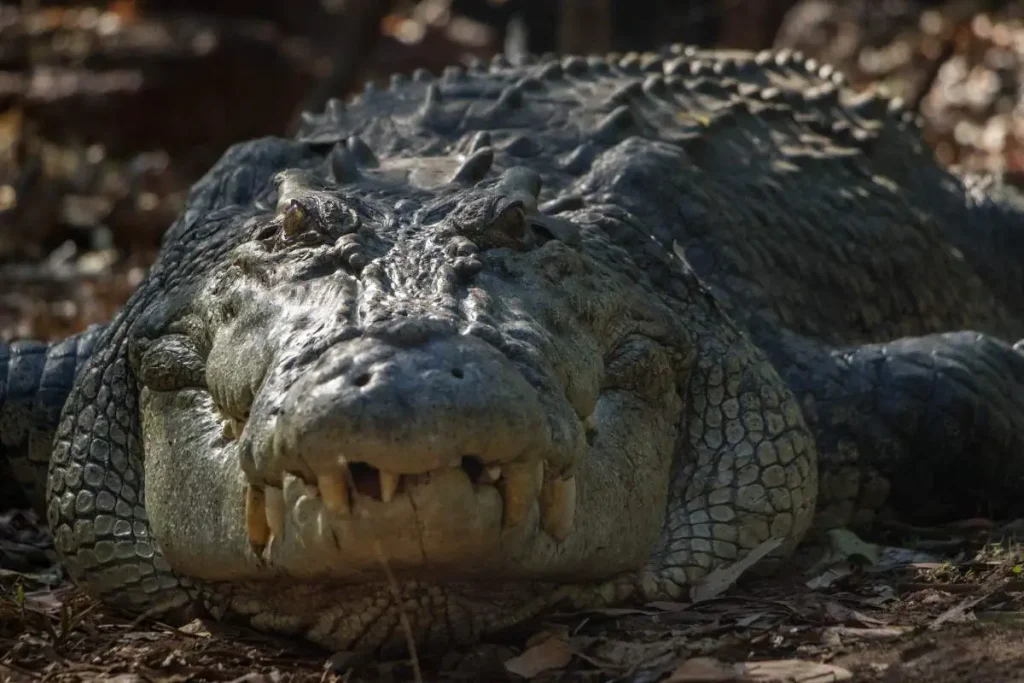
Living in Darwin, Australia, Smaug is a 5-meter long (16.3 feet) Australian Saltwater Crocodile. According to its Facebook page, “Smaug is a movie and TV star and can be hired to dramatically improve your production through his sheer presence”.
Smaug is 60 years old and about 500 kg (1,100 lbs) in weight.
Panjang [5 meters / 16 feet 5 inches]
(Thanks to Hieu Nguyen) Panjang is a 5-meter-long saltwater crocodile living in the Singapore Zoo. He weighs anywhere from 500 to 600 kilograms (1,100 to 1,323 lbs).
The largest prehistoric crocodile?
In the prehistoric ages, some animals were much bigger than today’s counterparts – including crocodilians. Click to see what was the largest prehistoric crocodile.
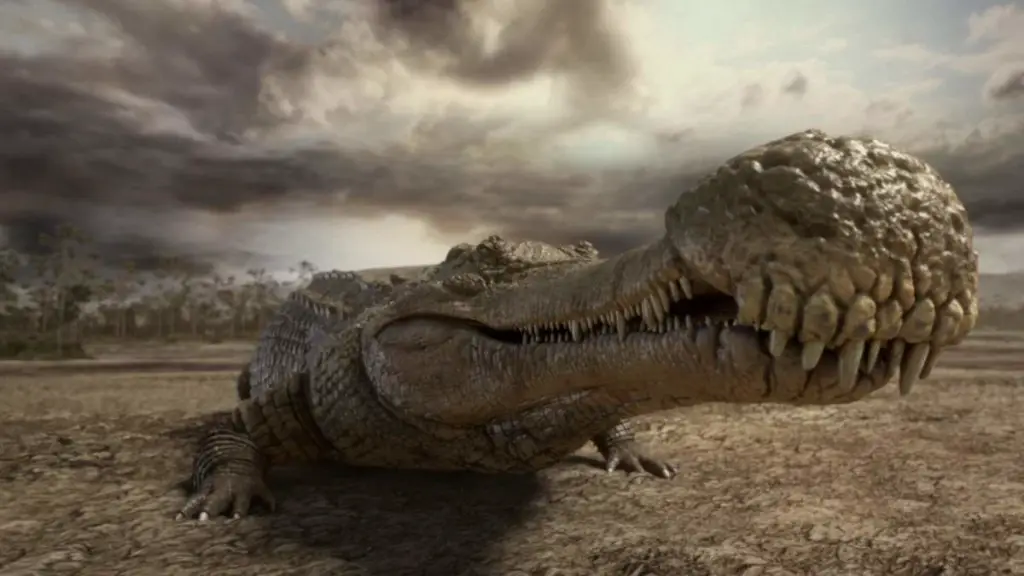
Related: Largest prehistoric crocodiles
The largest alligator?
Click to see what is the largest alligator ever measured, and the differences between crocodiles and alligators.
Notes
- A necropsy is an examination of a body after death to determine the cause of said death. It’s interchangeable with autopsy but necropsy is typically used when dealing with animal carcasses.
Sources
- Gomek on Wikipedia
- Cassius the crocodile on Wikipedia
- Gustave (crocodile) on Wikipedia
- Lolong on Wikipedia
- crocodilian.blogspot.com
- Sweetheart on Wikipedia
- “Here be a dragon: exceptional size in a saltwater crocodile (Crocodylus porosus) from the Philippines” by Nikhil Whitaker, on Research Gate
- Madras Crocodile Bank Trust on Wikipedia
- Madras Crocodile Bank Trust’s official website
- “Croc on: 42 years later, Madras Crocodile Bank is an ocean of cool reptiles” on The News Minute website
- “Remembering Jaws, India’s largest crocodile in captivity” on The Hindu website
- Moon Landings: All-Time List [1966-2025] - February 2, 2025
- What Is Max-Q and Why Is It Important During Rocket Launches? - January 16, 2025
- Top 10 Tallest Rockets Ever Launched [2025 Update] - January 16, 2025
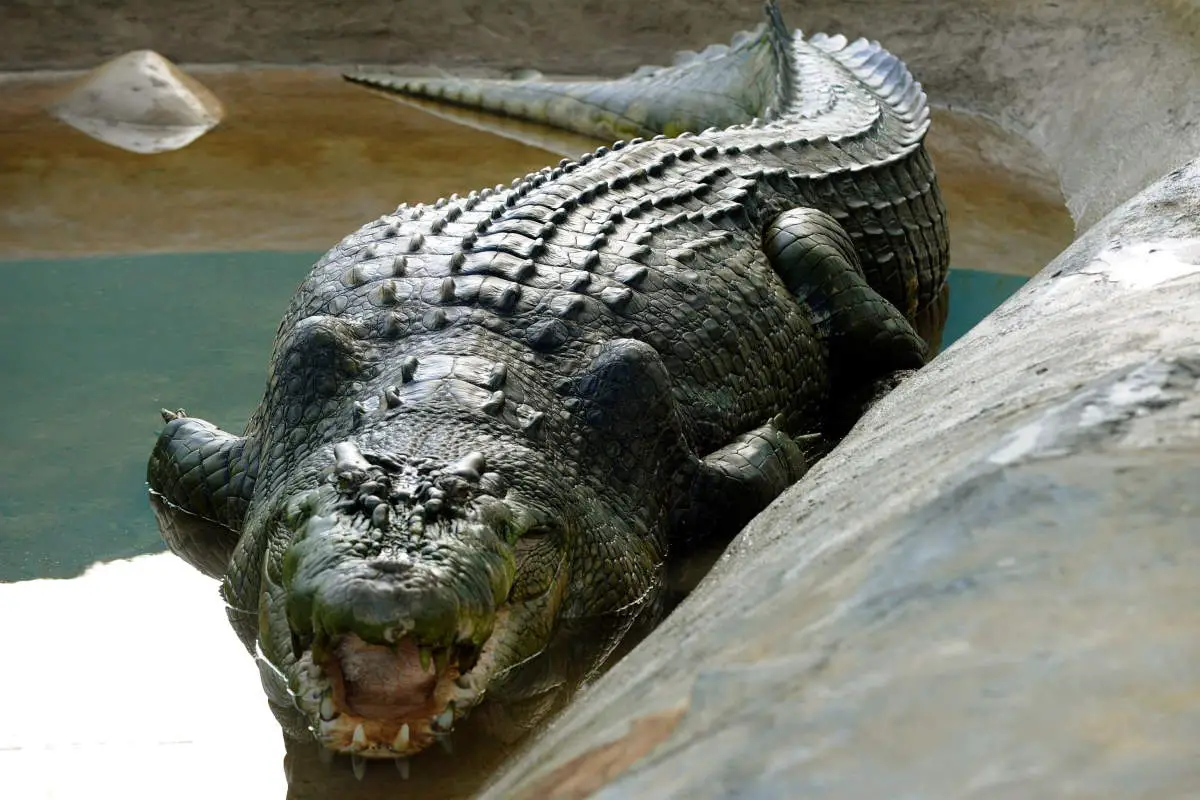
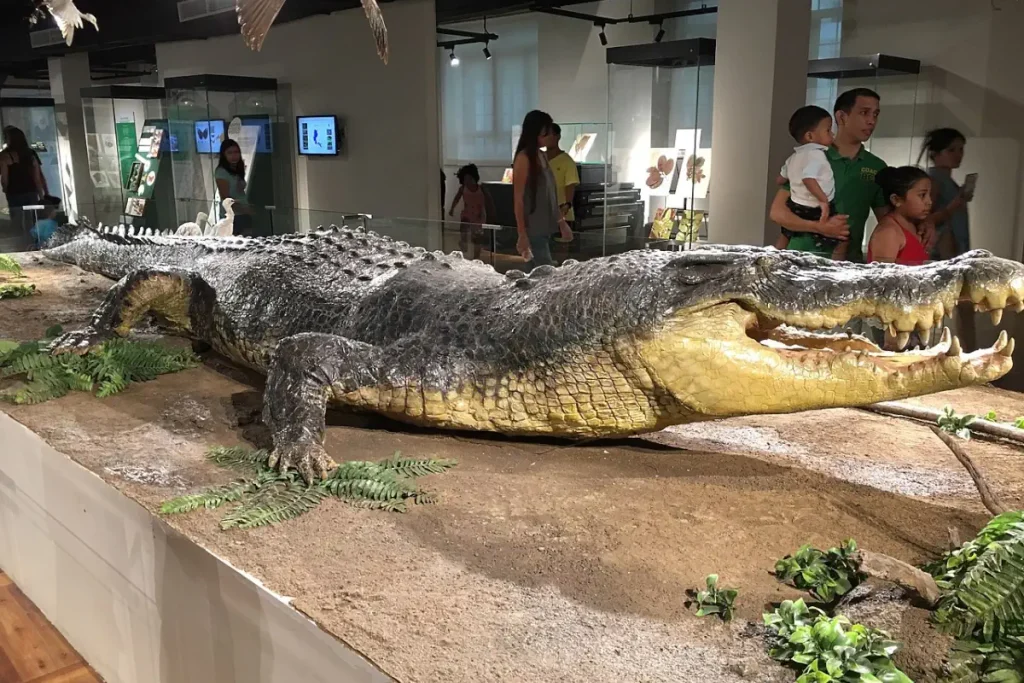
2 replies on “10 Largest Crocodiles Ever Recorded”
Why do you not mention Baru, the 17-foot, 1,500-pound Salt Water Crocodile who resides at the Toledo Zoo?
The supposed photograph of Krys in this document is actually a photograph of a crocodile shot on the Roper River, Northern Territory, in 1914. The photograph is from the CMS Hart Collection, Darwin, Australia.